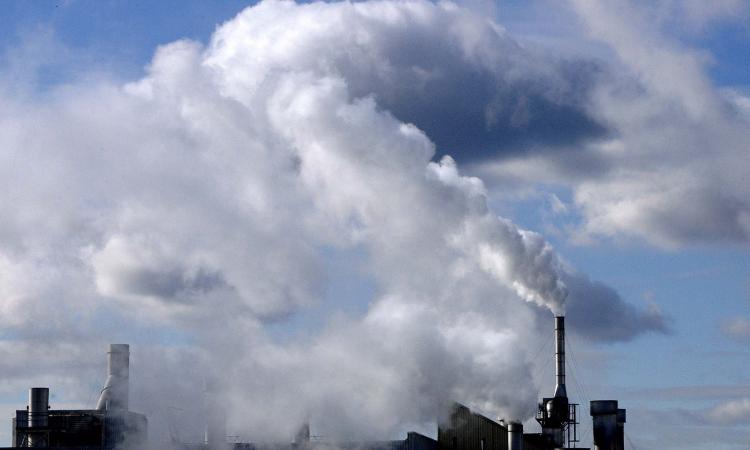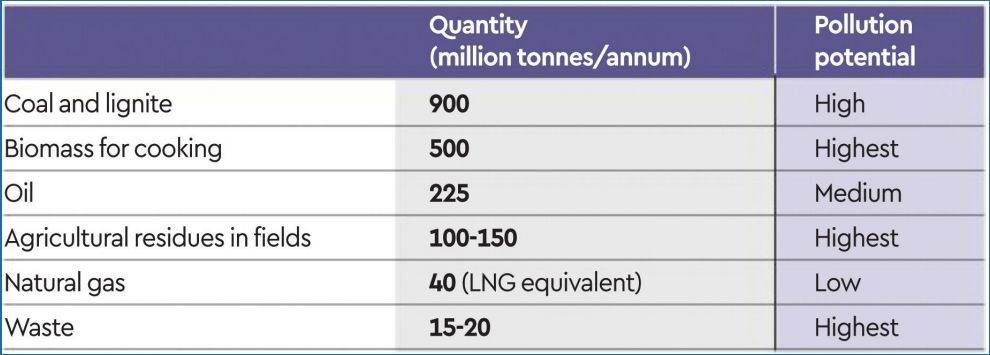
Air pollution killed 16.7 lakh Indians and led to an economic loss of Rs. 2.6-lakh crore, nearly 1.4% of the gross domestic product, shows a recent study by India State-level Disease Burden Initiative (ISLDBI). Published in the medical journal Lancet, the study also indicates that while the mortality from indoor air pollution reduced by 64% between 1990 and 2019, that from outdoor ambient air pollution increased by 115% during this period.
Like most developing countries, India too is faced with grave, multi-faceted risks due to rising air pollution. Today it is the second-largest risk factor contributing to the country’s disease burden. In 2017, around 97% of the country’s population were exposed to particulate matter (PM2.5) over the air quality guidelines value specified by the World Health Organization (WHO). Quick-fix solutions are resorted to during the winter months and the government shows no urgency to address the chronic problem.
Some of these issues were highlighted by Chandra Bhushan, President and CEO of International Forum for Environment Sustainability and Technology (iFOREST) in a talk jointly organized by Impact and Policy Research Institute and India Water Portal on Exploring sustainable solutions to air pollution: Lessons from COVID-19 pandemic.
Every winter, we ritually engage with Delhi’s air pollution, where the air quality index (AQI) levels are usually 200 on a good day and soar up to 900 at times. Figures of AQI above 25 are deemed unsafe by the WHO.
“The narrative on air pollution is obsolete and Delhi-centric. It overlooks the fact that Delhi has unique problems, such as pollution from both outside and arising locally. This doesn’t exist in many other parts of the country,” says Bhushan, who is one of India’s foremost climate change experts.
“Air pollution is a pan-India problem. All Indian cities like Mumbai, Chennai, Kolkata, Bengaluru and Hyderabad surpass the National Ambient Air Quality Standards (NAAQS) by a significant margin. These standards are the limits on the atmospheric concentration of six pollutants. In any case, these are 3-4 times more relaxed than the standards set by the WHO. By having a Delhi-focused discussion, we are neglecting a large part of the country that is also dealing with the problem such as Lucknow, Agra, Patna and other cities in the Indo-Gangetic plain,” says Bhushan.
The debate has to move beyond Delhi and away from a city-centric one. There is a need to focus on villages that have to bear the brunt of pollution. He discussed the National Clean Air Programme (NCAP), which was launched in January 2019 by the government. The five-year action plan aims to curb air pollution, build a pan-India air quality monitoring network, and improve citizen awareness. While Bhushan stressed on the significance of a nationwide plan, he suggested the introduction of a new layer, i.e. regional planning.
To clarify, he used the example of GRAP (Graded Response Action Plan) and the Emergency Plan notified by the Central Pollution Control Board to deal with air pollution. He said that the plans put an undue focus on the transportation sector that contributes to just 20% of the problem.
“The pollution debate in the country can be understood as 80% effort going towards 20% of the problem and a mere 20% effort on 80% of the problem,” says Bhushan. This was evident during the pandemic induced lockdown months of March and April when transportation and industries were down by 80% and coal power plants were operating at just 40% capacity. Yet, the country was barely meeting NAAQS, which only goes to indicate that pollution from cooking fuel, agriculture and natural sources are sufficient to breach air quality norms in large parts of the country.

To explicate his previous points, he broke down the chart further to display the amount of fuel burnt and its pollution potential. The chart showed that out of two billion tonnes per annum of fuel burnt, 75% of it includes coal, lignite, biomass and agricultural residues. However, our attention is concentrated on the burning of oil, which constitutes only around 10% of the total fuel consumed. Though biomass for cooking has one of the highest pollution intensities with huge health implications for women, there’s no discussion around it.

He contrasted the situation with that of western European countries and the US, which targeted thermal power plants to reduce air pollution and then lay an emphasis on automobile pollution. India, Bhushan said, focused on pollution by automobiles first, but never addressed coal and biomass pollution.
“We have to reverse the priority. Pollution by automobiles is important, but we are at the cusp of history. Automobiles will increase exponentially and will make internal combustion engine obsolete very soon. But, if we have to reduce air pollution, our focus should be on the reduction of the usage of biomass, coal and lignite, and agricultural residue,” says Bhushan.
He also spoke about the need to consider pollution by natural sources such as dust and desertification of land.
“The amount invested in air quality monitoring is extravagant in India. This is evident from the fact that in Delhi there has been a bump in the monitoring efforts and it has 47 air quality monitoring stations. What we need is different varieties of monitors that are smart, affordable and accurate,” he said.
There is a need to have appropriate protocols for air quality monitoring to ensure the quality of the data being recorded. Also, there is a need to utilise the satellite-based air quality data. Manual or lab-based air quality monitoring is often inaccurate and subject to sample loss, data malfunction, power cuts and poor analysis.
The solutions
Chandra Bhushan stressed on the need for a transition in the energy sector from coal plants, which are eventually becoming non-profitable and closing down, to renewable energy, which is much more affordable and will soon overhaul conventional sources of energy. There has been a massive investment in the research and development (R&D) of battery technologies throughout the world with newer varieties of batteries coming up.
He suggested that we should reduce pollution from coal thermal plants by making standards more stringent and introducing state of the art pollution technologies. At the same time, we also need to start phasing out side by side and replacing it with battery technology.
He underlined the inevitability of the continued usage of biomass during this interim period due to the widespread availability of it but using innovation, state of the art biomass gasification technologies has to be introduced which can contribute towards a smooth transition towards cleaner fuel. Overall, he seemed very optimistic about the transition from conventional sources of energy to renewable energy and new biomass technologies and the exponential growth in these sectors.
The transition in cooking fuel from natural gas to electricity (using induction technology) has already started and needs to be accelerated. A similar transition can also be seen in the transport industry with users transitioning to battery-powered vehicles. He used the example of e-rickshaws and seemed confident that two-wheelers and four-wheelers will quickly follow suit as they are more eco-friendly and usually have longer life due to less wear and tear as a result of less working parts. He did not discount unsafe battery management and disposal but said that technology can be garnered for recycling these batteries and for their safe disposal.
As regards agriculture, he felt that there was a need to encourage farmers to stop using tillage farming to reduce stubble burning. However, since farmers are accustomed to tillage agriculture and have been doing it for centuries, the subsidies offered by the government remain inadequate for the tenant and small farmers. Therefore, a complete overhaul is required to transition towards zero tillage farming by redesigning the combined harvester.
The solution lies in harnessing the power of innovation and introducing new technologies to bolster this transition towards renewable energy. A new economy powered by renewable energy can only be established by entrepreneurs, and by investing in the right technologies to smoothen this transition.
Facebook Live Video: https://www.facebook.com/impriindia/videos/352822069373210
Acknowledgements: Manoswini Sarkar, a research intern at Impact and Policy Research Institute (IMPRI), New Delhi and Masters Candidate of Development Studies at the Graduate Institute of International and Development Studies, Geneva, Switzerland.
/articles/air-pollution-filling-gaps